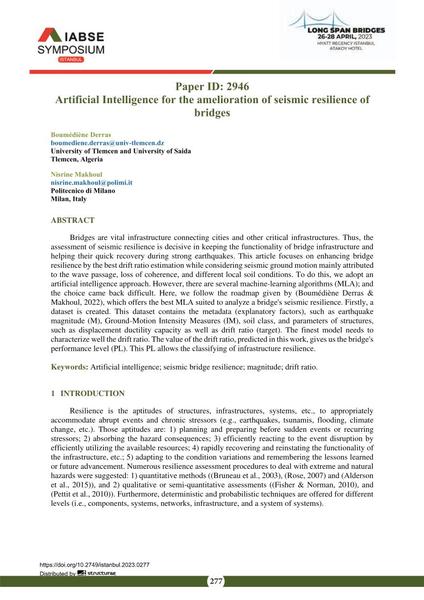|
Abstract:
|
Bridges are vital infrastructure connecting cities and other critical infrastructures. Thus, the assessment of seismic resilience is decisive in keeping the functionality of bridge infrastructure and helping their quick recovery during strong earthquakes. This article focuses on enhancing bridge resilience by the best drift ratio estimation while considering seismic ground motion mainly attributed to the wave passage, loss of coherence, and different local soil conditions. To do this, we adopt an artificial intelligence approach. However, there are several machine-learning algorithms (MLA); and the choice came back difficult. Here, we follow the roadmap given by (Boumédiène Derras & Makhoul, 2022), which offers the best MLA suited to analyze a bridge's seismic resilience. Firstly, a dataset is created. This dataset contains the metadata (explanatory factors), such as earthquake magnitude (M), Ground-Motion Intensity Measures (IM), soil class, and parameters of structures, such as displacement ductility capacity as well as drift ratio (target). The finest model needs to characterize well the drift ratio. The value of the drift ratio, predicted in this work, gives us the bridge's performance level (PL). This PL allows the classifying of infrastructure resilience.
|

